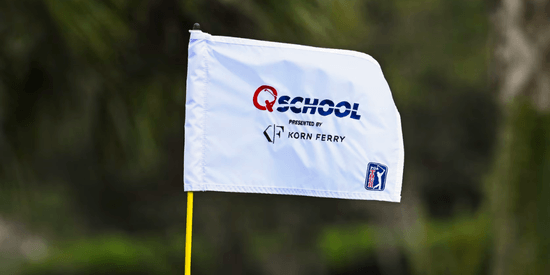Q&A with Sam Bettinardi of Bettinardi Golf
8/24/2014 | by AmateurGolf.com Staff
see also: Equipment Reviews

AmateurGolf.com Player Staff member Stuart Goldstein goes one-on-one with Sam Bettinardi of Bettinardi Golf
In this edition Stuart speaks to Sam Bettinardi, of Chicago putter designer and manufacturer Bettinardi Golf.
Q: Give us a little insight on how
Bettinardi Golf got started.
A: My father, Robert Bettinardi, first got the
idea to start making putters in the early
90’s after walking into a golf store in
cold December in Chicago. He saw an ad on
the wall for a putter that was milled on an old
Bridgeport milling machine and wondered why
they were still using this technology, when at
the time he owned a machine shop with CNC
machines (computer numerical control). He
called the person in the ad to talk about his
capabilities with new technology and they
collaborated to make putters from 1993-1997.
We started Bettinardi in 1998 and the rest is
history.
Q: How important is it that your
products are made in the USA?
A: Very important to us. To be able to sit at
my desk and look out a window onto our shop
floor is very cool. It continues to remind me of
our high quality control standards, and the
fact that I can walk 20 feet away and pick up
a putter and check out all aspects of
manufacturing. Not many golf companies make
their products in the USA, and we will continue
to be different in that regard.
Q: As VP of Sales and Marketing what
is your typical day like?
A: A typical day includes talking to our
domestic sales team, skyping with our
international distributors, making changes to
our website and posting on social media, and
also trying to learn about the manufacturing
process as much as I can. Milling a putter start
to finish is a lengthy and time consuming
process!
Q:
You played golf collegiately. Did you ever
think of taking your game to the next level?
A:
I definitely did think of playing professionally,
but I wa
s honest with myself and real
ized that I was never going to make a career
out of my golf game, and had a better future
in business. As the PGA Tour slogan goes,
these guys are good!
Q: Matt Kuchar uses a Bettinardi arm
lock putter. How did that design come about
and was Matt influential in its design and
R&D?
A:
Matt has a long history with our company
back to 2002 when he won his first PGA event
with our putter. Matt knew what our
machining capabilities were and to
create the arm lock putter to his specific
standards was a fun project for us.
We must have sent him over 20 prototypes in
2012 until in January of 2013 he finally made
the switch to the one he liked.
Q: How has the USGA’s ban of anchored putting changed your product profiles? Do you agree with the ban?
A: The ban has helped our product profiles because the #6 golfer in the world, Matt Kuchar, is a Bettinardi brand advocate. He is on our putting staff and uses the arm lock putter which is the best alternative to the anchored putting stroke. We engineered his putter to contain 7 degrees of loft in the face, and a 2.5 shaft offset, which are now known as the Kuchar Signature Models. I think the ban definitely has merit after the resurgence of players putting well and winning majors with the belly/long. Do I think it was an unfair competitive advantage, not necessarily. You still need to get the ball in the hole.
Q: How important is it for a golfer
to get fit for a putter and what are some of
the important specs that need to get
customized: lie angle, swing weight, look?
A:
Most golfers want to gain distance off the tee
because its’ sexy to hit it long.
However 40-50% of your strokes in a round
come from the putting green, so getting fit is
critically important. Hitting a little white ball
into a 4.25 inch diameter hole takes precision,
and getting fit will help dial you in to be more
precise, and in return, lower your scores.
Q: Every now and then you see a
story where a PGA pro picks up a putter off
the rack at a local retail shop and wins a
tournament. Is that just a matter of
something looking good to the eye?
A:
We believe putting is all about confidence. So
if a player decides he has no confidence in his
current gamer, and picks something up off the
rack and makes the first three putts, then he
may now have found the right tool to give him
confidence in his putting, and in return will
carry throughout the rest of his game.
Q: Putters are a growing piece of
your business. Tell us about the rest of your
businesses and how milled putters integrate
with those businesses.
A:
We also manufacture a variety of different
parts that includes pieces for hydraulic
companies, medical devices, and the defense
industry. Milled putters are not the most high-
tolerance parts to manufacture, but because
we machine everything under IS09000:20
08 standards, it has to be made the same
way start to finish. Every putter goes through
a variety of different tests and inspections
before it reaches the finished stage. I guess
you could call it overkill, but that is what we
pride ourselves on.
Q: You must see a lot of golfers , of
all abilities, come through your shop. What is
one tip all golfers should use to sink more
putts?
A:
Fin
d a putter that suits your game, and stick
with it! I am a victim of switching putters to
whatever the flavor of the month is. I think
this does not help your game in the long-term,
and would be best to stick with the same
putter and grind it out.
Q: What is it like working for your father, who is so highly respected in the industry, as well as having your name on the door and your products?
A: I know that working with my dad is a dream job. It has been amazing the last 2 years to see our business grow the way it has, and also sell and promote something you care so much about, because our name is on it. We want the Bettinardi brand to keep its strong image and we know it will if we keep up with the current formula.
Q: Do you see yourself expanding into other areas of the bag like wedges or irons?
A: We just released a wedge line overseas about 1 month ago, stay tuned for wedges in the States!
Q: Every putter manufacturer has a
“Anser” type model in their line.
What makes this style of putter so popular
and 20 years from now will putter styles be
that much different that today’s
styles?
A: When someone thinks of a putter they think of an anser style (BB1) putter. [Karsten] Solheim was a pioneer in the use of perimeter weighting which resulted in higher moment of inertia (MOI) clubheads which resulted in less clubhead twisting on off center hits. This model continues to be our best seller and seems to remain what people expect out of every putter company. 20 years from now I think this will still remain a strong staple to every putter brand, however we will see more experimentation with different materials, weighting such as counterbalance, and head shapes. We are working on a game changing design right now, something no one has seen before so we will let you decide how different it really is.
Q: What is the difference between working with a tour pro and your average amateur golfer?
A: The tour pro understands his stroke a lot more in depth than the amateur. The pro knows exactly why he putts a certain way, and is looking for minute adjustments. The amateur is looking for that magic wand that will make him the envy of all his friends, and is more moldable to what the fitter thinks is best for his game.
Q: Who wins in a putting contest-you or your father?
A: Right now, I win because I am very confident with my arm lock putter. In the past, my dad would win every time because he is a great putter, not someone you want to play as an 8 handicap!
Most Popular Articles

2025 PGA TOUR Q-School Guide: Sites, Scores, and Who Advanced
Dec 5, 2025Second Stage is complete and Final Stage awaits at Sawgrass — follow every Q-School leaderboard and the players still chasing
2025 LPGA TOUR Q-Series: Final Qualifying Stage FINAL SCORING
Dec 8, 2025Helen Briem earns medalist honors, 31 players headed to the LPGA next year
Australian Open at Royal Melbourne: Preview, amateur bios, and how to watch
Nov 30, 2025Rory McIlroy headlines one of the championship's top fields in years - at least four amateurs will have their chance at glory
Luke Ringkamp Cruises to Rolex Tournament of Champions Title at TPC San Antonio
Nov 26, 2025One week after committing to Pepperdine, Luke Ringkamp won the Rolex Tournament of Champions by nine shots.Inside Gil Hanse’s Restoration of Baltusrol’s Upper Course: A Return to Tillinghast’s
Dec 11, 2025Renowned architect Gil Hanse reveals how he brought Baltusrol’s Upper Course back to life by honoring A.W. Tillinghast’s originalLoading latest news...
